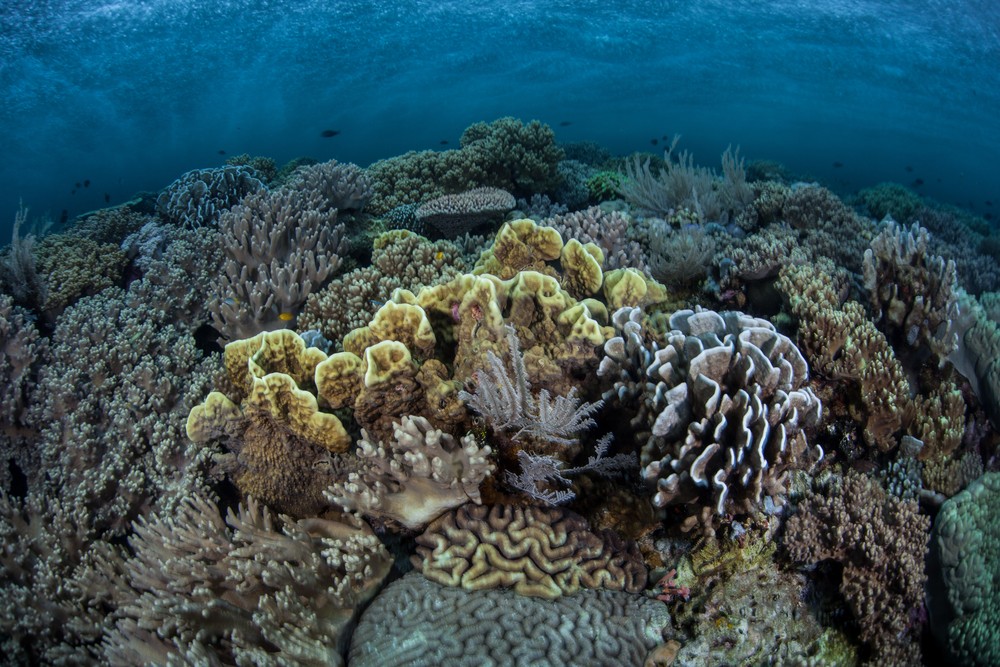Popular Reads
Top Results
Can't find what you're looking for?
View all search resultsPopular Reads
Top Results
Can't find what you're looking for?
View all search resultsBig plans in store for Indonesia tourist destinations
Change text size
Gift Premium Articles
to Anyone
A
s tourism slowly takes its place as a new engine of economic growth, the government is making aggressive plans to improve and promote new tourist destinations.
Morotai in Maluku, Labuan Bajo in West Nusa Tenggara and Tanjung Lesung in Banten are three names that may sound unfamiliar to the domestic and international community, but they are among the so-called 10 emerging tourist destinations that the government expects can be as famous as Bali.
The other seven destinations are Tanjung Kelayang in Belitung, Wakatobi in Southeast Sulawesi, Lake Toba in North Sumatra, Bromo-Tengger-Semeru in East Java, the Thousand Islands in Jakarta, Borobudur in Central Java and Mandalika in West Nusa Tenggara.
However, raising them to Bali’s level will take a lot of work, a fact acknowledged by the government, especially as it hopes to attract 20 million foreign tourists by 2019.
In its latest Indonesia Economic Quarterly report, the World Bank states that implementation of this plan will require efforts on multiple fronts and infrastructure will play a crucial role.
Indonesia currently ranks in the bottom half of countries on several infrastructure-related tourism competitiveness indicators, such as ground and port infrastructure, tourist service infrastructure, health and hygiene, information and communications technology (ICT) readiness and environmental sustainability.
The Public Works and Public Housing Ministry, one of the government’s most strategic posts for infrastructure development, has stated that it will focus on infrastructure development for three destinations in the next two years, namely Lake Toba, Mandalika and Borobudur.
An integrated master plan for the development is also being formulated by the Public Works and Public Housing Ministry and Tourism Ministry.
“I hope with the integrated master plan, there will be cooperation between ministries and regional governments for the development of the three destinations,” Rido Matari Ichwan, the ministry’s regional infrastructure development agency (BPIW) head, said recently.
The government has allocated Rp 1.6 trillion (US$122.74 million) in the state budget in 2016 and 2017 for various infrastructure projects in the three destinations, including road access, water system, drinking water, waste management and housing, among others.
Data from the Public Works and Public Housing Ministry reveals that the development plan for Lake Toba includes the construction of toll roads connecting Medan-Kualanamu-Tebing Tinggi and Tebing Tinggi-Siantar-Parapat, access road to the Sibisa airport in Parapat and 14.3 kilometers of piping in Simalungun, among others.
Development for Borobudur includes initiatives such as self-built housing development in Magelang, a toll road connecting Yogyakarta and Bawen, a regional drinking water system, and reconstruction and expansion of several roads.
Meanwhile, Mandalika will see several works carried out, such as the Sulin bridge improvement, road expansion and maintenance, and irrigation network construction in central Lombok.
Rido added that the ministry would also cooperate with the Transportation Ministry on the development of the airports in the new tourist destinations.
In addition to state budget funds, the government is also seeking other funding sources. It is looking to obtain a US$200 million to $500 million loan from the World Bank to fund the infrastructure development in the three destinations.
Discussions are taking place and the loan is expected to be ready for disbursement by July next year.
Tourism Minister Arief Yahya previously stated that the government would also launch a limited participation mutual fund (RDPT) by next year, through which it sought to garner Rp 10 trillion to develop all 10 destinations.
“We will use the funds to build amenities. They will be channelled first to the four special economic zones [and tourism destinations], such as Tanjung Kelayang, Tanjung Lesung, Mandalika and Morotai,” he said.
The World Bank says the government will also need to attract private investment to finance its goals.
Early indicators are promising, with total foreign and domestic direct investment in hotels and restaurants reaching nearly $1 billion in 2015, an increase of 45.5 percent compared to 2014, while the number of investment licenses approved in the hotel and restaurant sectors surged more than five times to 266 licenses in 2015 from 2014.
Licensing simplification is one important aspect that will help spur more investment, according to the World Bank. “As a first step, it will be essential to establish an inventory of the number and type of business licenses needed [at the national and subnational level] to establish a tourism-related business,” he added.










